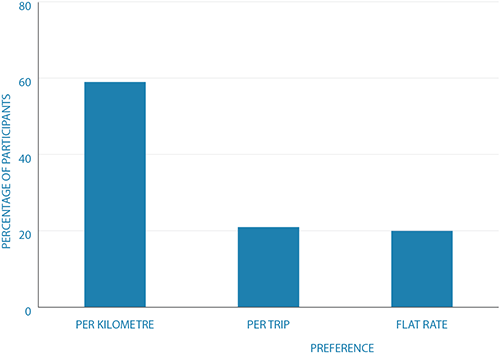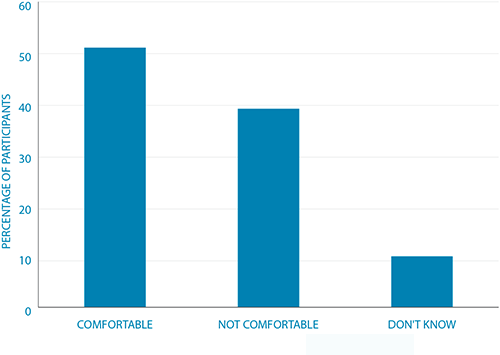A USER-PAYS SYSTEM COULD WORK IN AUSTRALIA
The study’s findings present encouraging evidence that the Australian community is open to considering – and trialling – more sustainable and equitable road usage and funding alternatives, particularly when they understand the benefits reform can bring.
The path to road-funding reform can only begin with building understanding of how motorists currently use the roads, how they are prepared to pay for them and what they expect from any new system.
A SUSTAINABLE FUNDING SOURCE
The first stage of the study tested three usage-based charging options – a charge per kilometre, charge per trip and flat rate option. This stage showed that participants were open to trying a more direct and transparent way of paying for their road use and that the different charging options tried by participants did not impede their usual driving behaviours.
PREFERENCES OF USAGE-BASED CHARGING

Of the three options, the charge per kilometre was the most popular and memorable option, and potentially, the easiest to understand.
The number and nature of charging options would need to reflect the priority policy objectives and the practicalities of broad-based roll-out.
Managing demand
The second stage of the study tested two congestion-based charging options – cordon charging and time-of-day charging. This stage showed that a user-pays system could be adapted to assist with managing traffic across road networks through the use of pricing signals to modify behaviours in congested areas or at peak travel times.
Cordon charging
 The group of participants who entered the cordon as part of their usual driving habits appeared to have reduced their weekly cordon travel by 10 to 15 per cent.
The group of participants who entered the cordon as part of their usual driving habits appeared to have reduced their weekly cordon travel by 10 to 15 per cent.
Sixty-three per cent of participants who trialled cordon charging said they would be comfortable paying for road use in this way.
Time-of-day charging
 Overall, participants’ patterns and level of road use in the presence of a time-of-day charge were largely consistent with those during normal driving periods. This contrasts with the downward trend observed in the group of participants trialling cordon charging.
Overall, participants’ patterns and level of road use in the presence of a time-of-day charge were largely consistent with those during normal driving periods. This contrasts with the downward trend observed in the group of participants trialling cordon charging.
Of participants who tried time-of-day charging 51 per cent said they would be comfortable paying for road use in this way.
Setting clear objectives for a user-pays system will underpin its effectiveness.
The extent to which addressing congestion is prioritised alongside the objective of restoring a sustainable funding base for Australia’s road networks will be an important consideration for policymakers.
